Free Like a Bird – Creating Free from Expectations
This week, I write about my personality type based on Thomas Erikson’s book Surrounded by Idiots and how to paint free from expectations.
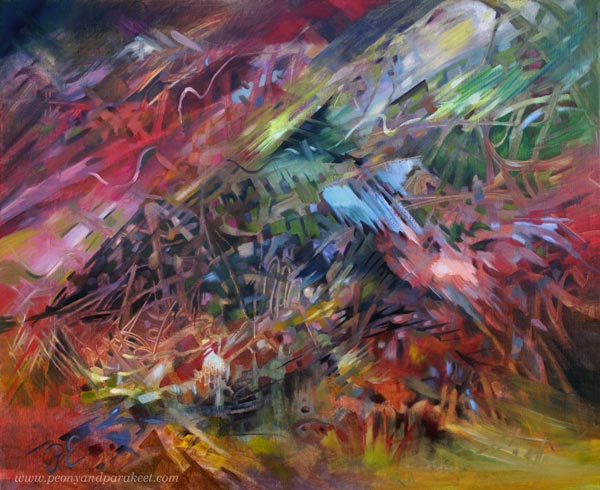
Here’s my newest painting. When finishing it, I became surprised gladly when “Blackbird” got a little sister “Finch.” Here’s Blackbird again:
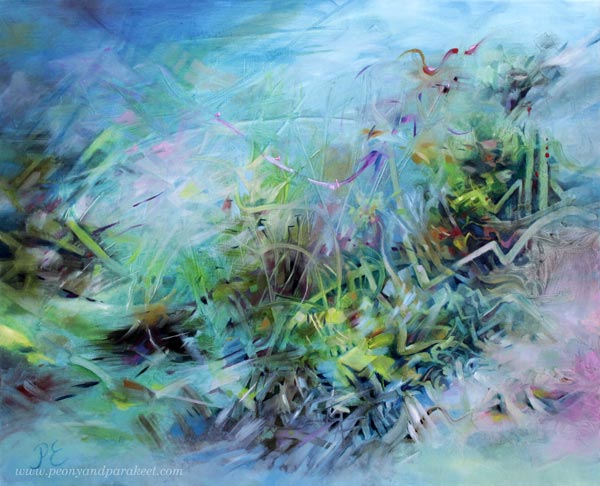
Book: Surrounded by Idiots – The Four Types of Human Behaviour
All my life, I have had strong opinions about how and what I should paint. And yes, these opinions have not been something like “powerful dreams” but more like pushy commands. I didn’t even realize how pushy they have been until I read Thomas Erikson’s book “Surrounded by Idiots.” It made me think about my personality from a new perspective.
Even if the idea of the book – dividing personalities into four categories and naming them by colors – could be taken as nonsense, after reading it, I can’t help thinking about how “red” I am. An ambitious fact-oriented person who has pushed herself to the utmost limit with this art-making obsession.
If you are “yellow,” you probably think that I should either have fun or move on. “Greens” might recommend taking a rest and stopping working too hard. And “Blues” claim that the book is not scientifically proved and there’s no reason to quit.
But I have discovered a new solution. It’s been a joy to use my red energy only to make sure that I keep painting. When I open the tubes, my redness is gone. I am open to painting anything. Every ugly start feels like an invitation to the jungle: Let’s see what’s going on in the inner world.
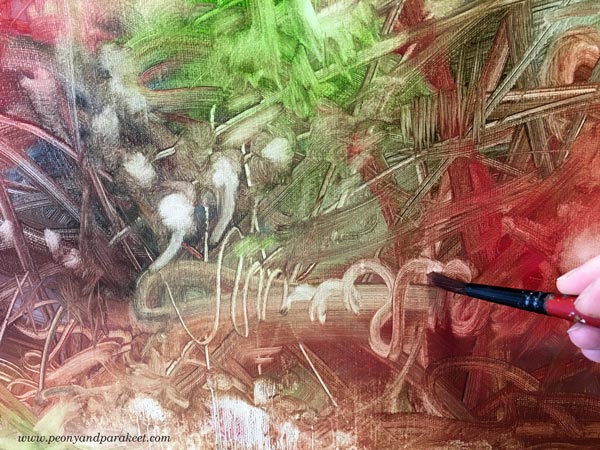
Breaking the Glass – Growing Compassion Towards Inanimate Things
In the class Floral Freedom, you dive deep into Wassily Kandinsky’s ideas about abstract art. Among other things, he talks about breaking the glass – stopping being the observer and starting to be the one that experiences things. Now when I have been pushing myself for almost seven years, the glass has become thin. I feel joy about how easily it breaks right after squeezing the paint on the palette.
For a red person, it has been difficult to break through. I have been giving orders and tightened the control from time to time. But now, the only goal for the spring is to paint all the canvases that I purchased earlier this year. Not questioning what I paint, but just do it.
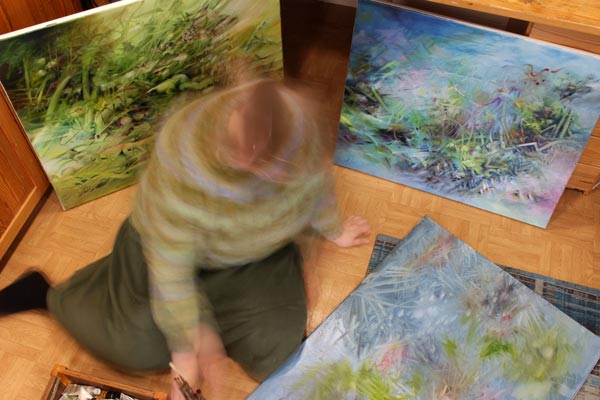
“Do it!” the red in me commands matter-of-factly and then leaves me working. After breaking the glass, I arrive at a lobby that’s filled with all kinds of stuff. For example, there are tulips that my husband removed from the bench where they were not supposed to grow.
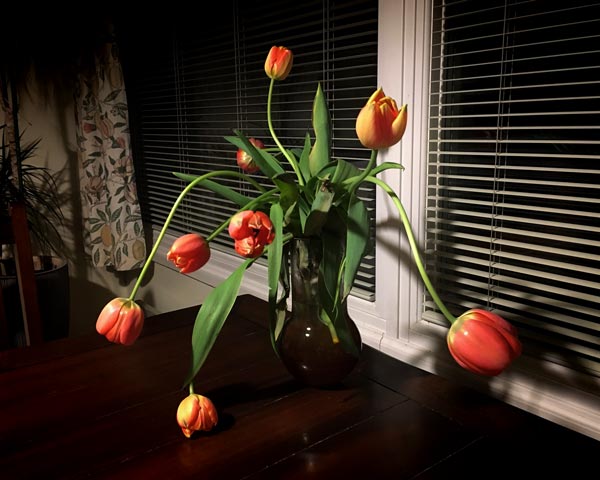
They twisted and turned in the vase, like wild animals in a cage, trying to break free. And when they withered, they became angry and devastated beasts, desperate to continue their lives. They didn’t want to face the fact that they wouldn’t reproduce like they were born to do.
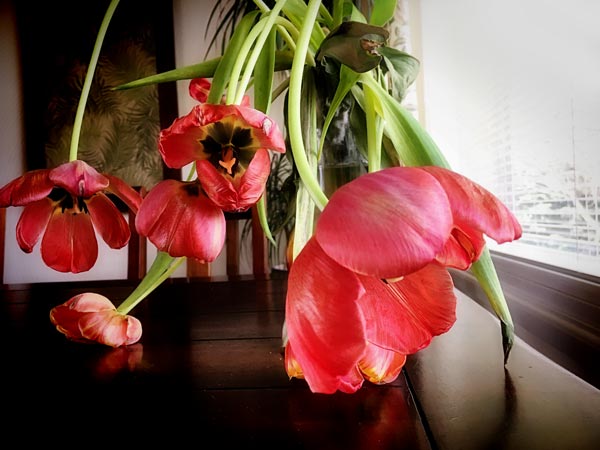
When painting, we can see similar things or just glide on the glass and bypass them. Shapes that don’t get the place in the spotlight. Lines that disappear before they reach high enough.
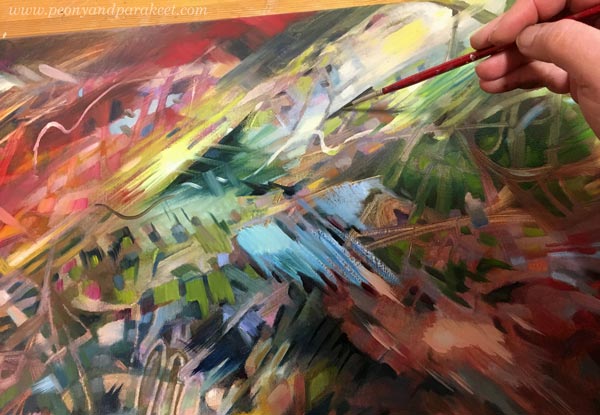
But if we put our mind into noticing them, we can make these inanimate splotches of paint breath and fly, even save some ugly spots. Not because we would hasten and thus compromise the quality, but because we feel sudden compassion towards their character.
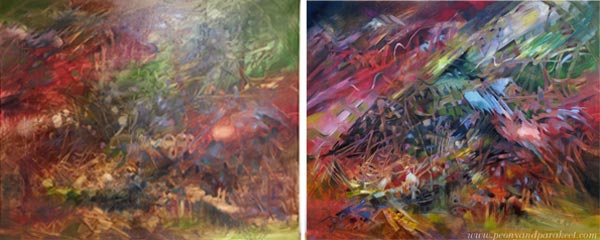
Then a picture is not forced but appears naturally. However, the result is not static or exact like the observer would want. Instead, it describes the inner experience of being.
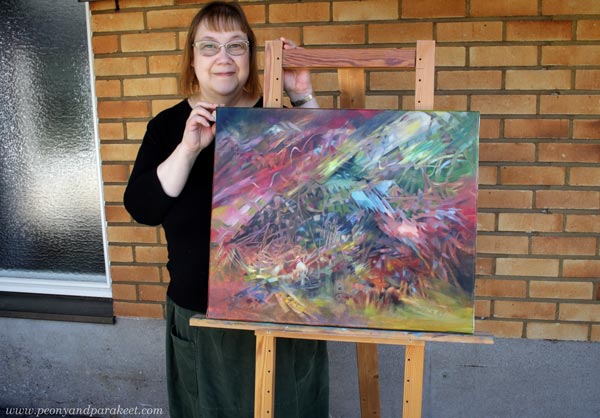
The Experience of Being a Finch
In this painting, the being is a little bird, facing danger, trying to take care of its nest, flying and falling, still living the summer of her life.
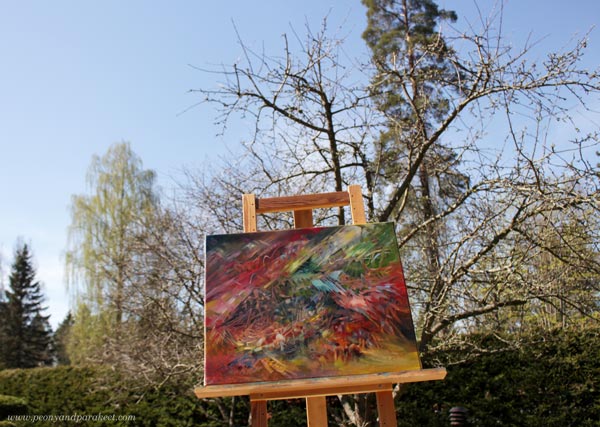
Have you read Thomas Erikson’s book Surrounded by Idiots? Do you see a connection between your personality and art-making?
Can or Can’t Draw – Did You Know This About Drawing?
Before you decide whether you can or can’t draw, read this!
Last week, I re-organized my art supplies. Paints and painting mediums got a more accessible location, and pens and other drawing supplies went into a closet. It was a consequence of the revelation that I had become a painter.
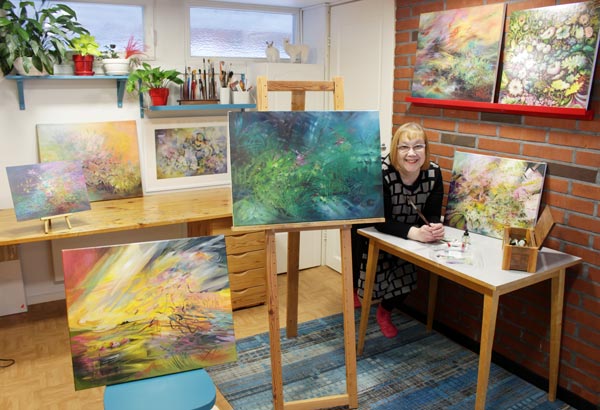
But instead of declaring the love for painting, this post is about drawing!
Namely, my journey in art has been gathered around finding my line. To me, the line is the voice. It’s the leading singer, while colors and heavier shapes are the rest of the orchestra. The line itself is enough to make any piece of art sing.
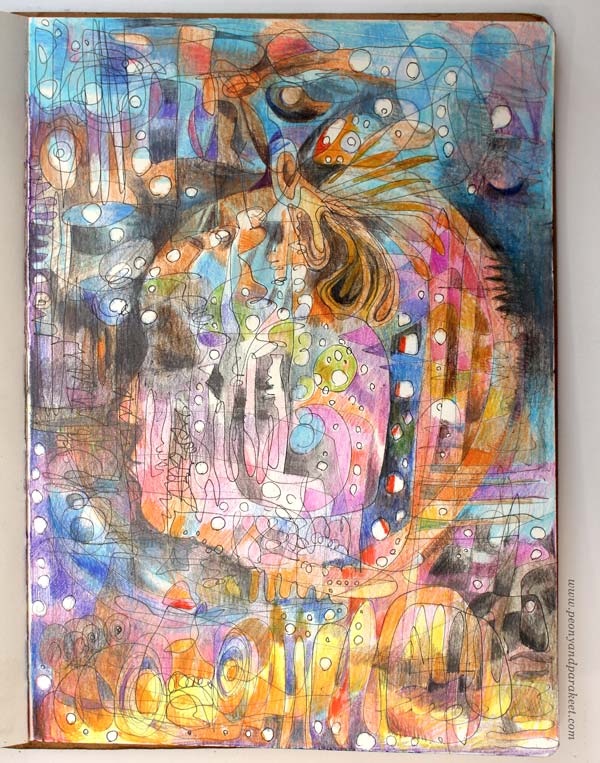
“I can’t draw” was my problem for too many years. Then I realized that we define drawing too narrowly.
We aim for the skills of drawing realistic objects and then end up worrying about the stiffness of our work. “I want to be more spiritual, I want to be more abstract, I want to see me in my drawings.” Have you ever thought like this?
My solution was to abandon references and start drawing circles.
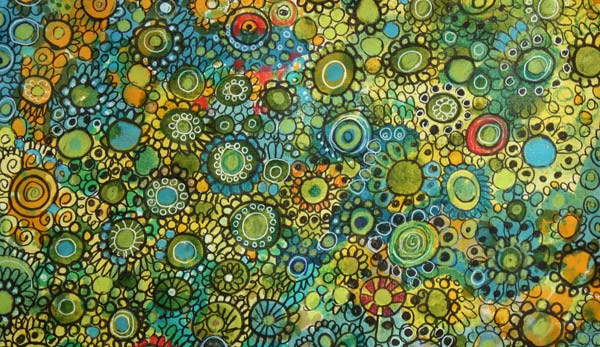
Don’t Just Draw Circles!
Those years spent with circles now felt like a waste of time. I didn’t have guidance for freehand drawing, and I did what felt comfortable at first. But circles are closed and rigid shapes, and when you want to open up and loosen up, you need to open and loosen your circles too.
Here’s a short 4-minute video from 2017 that shows how you can move forward from drawing circles.
Drawing – like any art – has two sides.
One side is a skill of controlling a pen or a brush so that the result is attractive and aesthetically pleasing. But drawing is also a skill of getting out of control and expressing the limitlessness of the mind.
Both skills support each other. Clarity and stiffness add ornamental beauty to loose lines. And drawing wildly helps with showing more personality when you want to be in control.
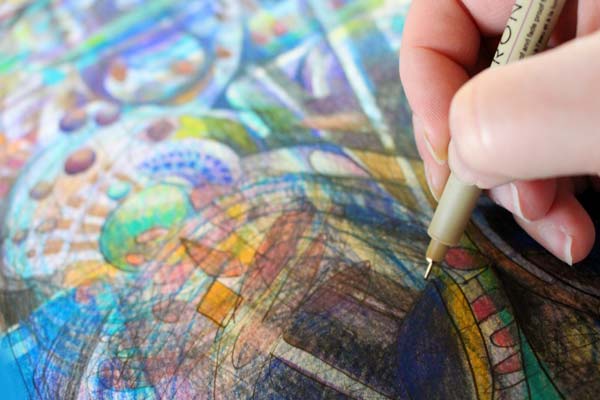
For me, exploring drawing from the other angle was ground-breaking.
I developed a class called Inspirational Drawing, where we draw and color freely but also use inspiration images to boost imagination. Inspirational Drawing 2.0 is the latest version of this popular class.
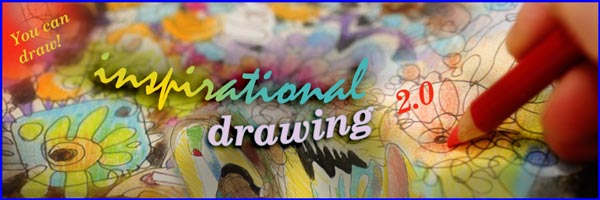
You know you can draw when drawing feeds inspiration.
When I paint, I start with a vague idea and go where happy accidents lead me. I don’t need much to get started. The first idea can be just a color combination from an old painting.
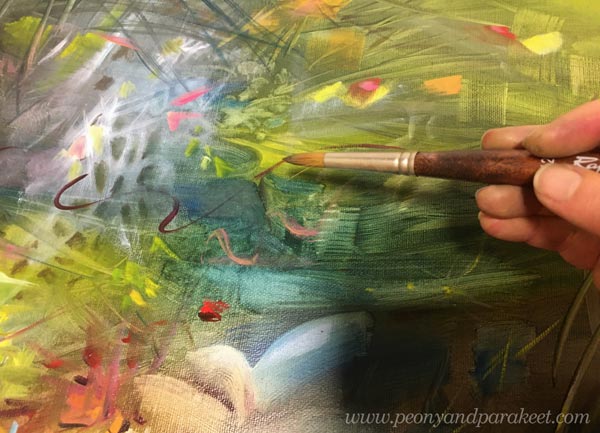
By practicing inspirational drawing, I found my living line, and the energy that’s packed into it is enough for any sized painting. My line sings, and the rest of the orchestra supports it.
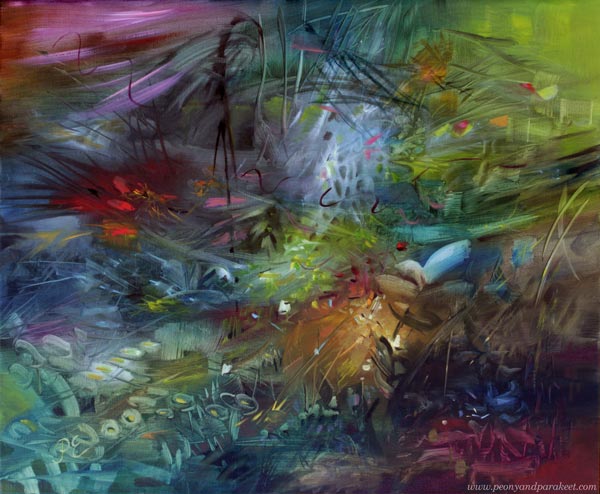
So, isn’t it sad if we try to improve our art without paying any attention to our line?
If we try to release the expression without releasing the line, giving the full power to the leading singer?
If we say we can or can’t draw without allowing free expression?
What do you think?
Your Art and Loosening Up
This week, I talk about being unique and loosening up in a video. You also get to see me working with a new oil painting.
Your Art and Loosening Up – From a Former Engineer
With the video below, I want to get you to think about how much you do layering. But this time, I don’t talk about the actual layers of the painting, but the layers of you and your life – the more abstract stuff. Namely, we often lead our artistic direction too literally and don’t allow contradictory or silly ideas. I hope you enjoy this video!
This is a little different than many of my videos. I would be interested to hear how you like it! Do leave a comment!
Links Relevant to the Video
- Ilun Handu Duunaa, Episode 44 (in Finnish)
- Paul Klee and Wassily Kandinsky at Wikipedia
- Paul Klee’s Pedagogical Sketchbook at Amazon.com (affiliate link)
- Wassily Kandinsky’s Point and Line to Plane at Amazon.com (affiliate link)
- Floral Freedom (the abstract floral class!)
Expressing Inner Storms by Painting
This post is dedicated to all who have lost their creative inspiration during these challenging times when outer storms cause inner storms too.

I have always loved art that uplifts and is more on the bright side of fantasy than in the darkness. I have defined myself as an artist who does not express agony or suffering or bring out what’s wrong in society. My art has based on the possibilities of imagination. It’s about the richness of the inner world. “Spiritual freedom” has been my word.
But the longer I have painted, the more courageous I have become. How flowery do my paintings have to be? To free up my art and to free up my thinking as well, I have begun to accept all kinds of shapes, colors, and emotions. The same flowers that bloom in my watercolor pieces become little monsters when I paint more freely in oil. It’s like there’s a new world under the inner world I only used to know.
Painting Inner Storms
At the end of January, I started a new big painting. It had dark colors, but I intended to brighten it. “When the time is right, I will make it more cheerful,” I promised to myself. Weeks went by, and it always felt like I had something more important to do. I didn’t have the energy, or I had too much energy. The more I postponed the finishing, the moody I became. “This pandemic gets to my nerves,” I said to my husband.
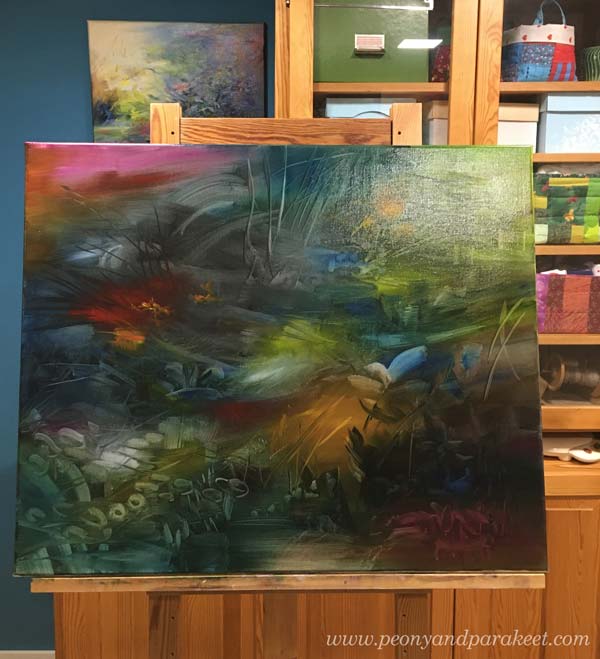
But when my spirit got more and more low, I had to do something. One night I picked paints and brushes, abandoned all the happy stuff I was creating and continued the painting. The brushes felt heavy at first. The paint tubes were like stones. But then I remembered the magic words: “Päivi, you can paint!” This confidence, even if it always feels false first, energizes my strokes and thoughts. The painting begins to speak to me, and my responses become more and more natural.
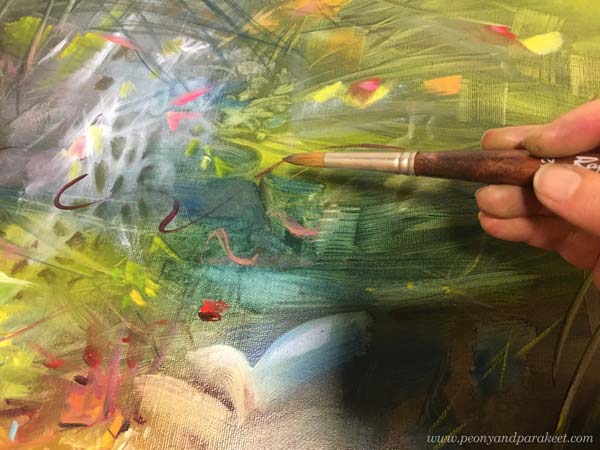
This Too Shall Pass
“What are you painting, Päivi,” I heard my inner critic saying after a while. “The piece is still very dark.” My immediate answer was: “Yes, it’s dark, but this too shall pass.” At that moment, I knew the name of the painting and why it should not be forced to look more cheerful. Inner storms can be as beautiful as the happy moments and little monsters as clever as any flower.
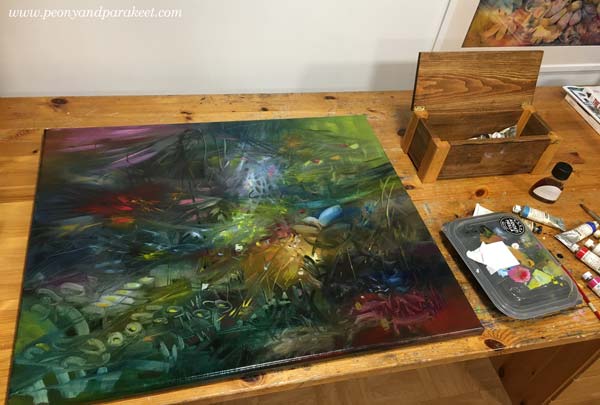
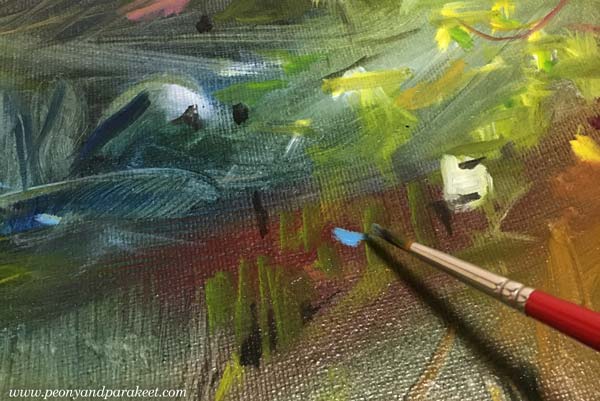
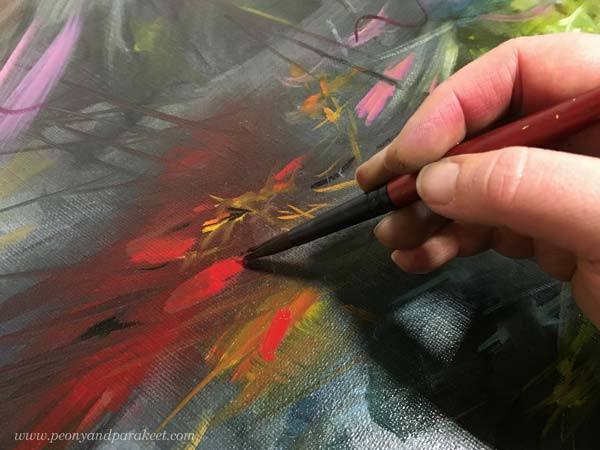
When I woke up the following morning, my mind was calm and still. And when I look at the painting, it gives me hope no matter how stormy and gloomy it seems.
Here are some detail pics.
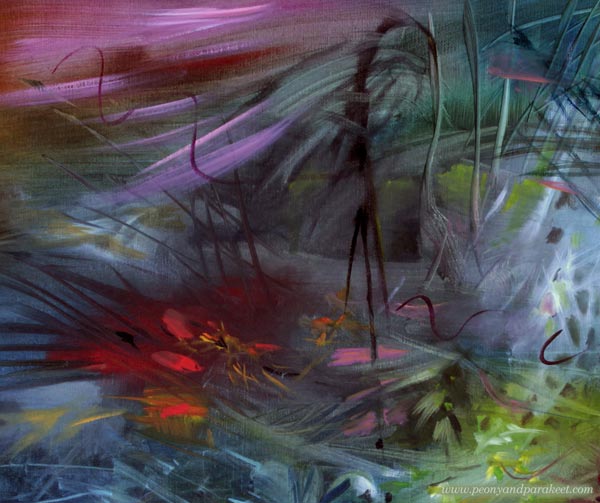
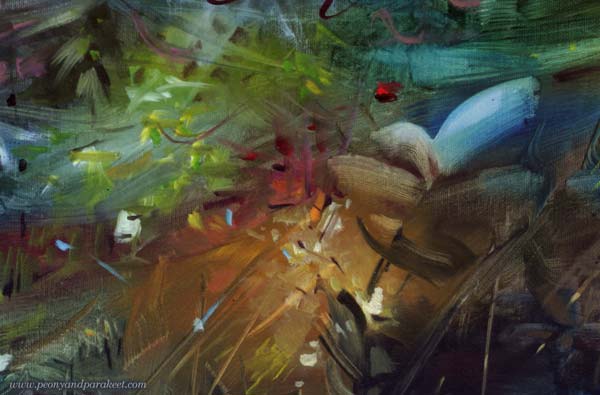
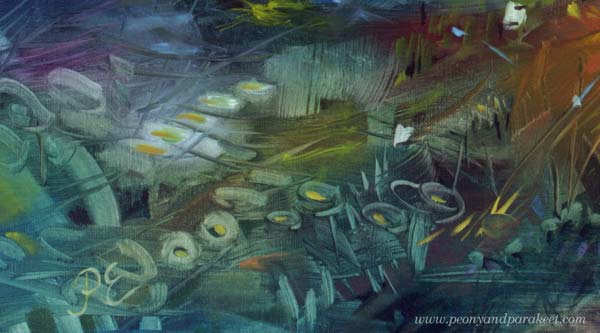
Here’s the whole painting again.

Sometimes the lack of inspiration is a sign of not letting out what needs do so.
Have a creative Easter!
P.S. My abstract painting class Floral Freedom is now available as a self-study. Watch the video below!
My free painting style is based on Paul Klee’s and Wassily Kandinsky’s timeless teachings presented in this class. >> Buy here!